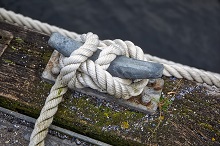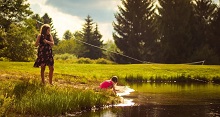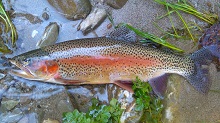The Mayfly
Many people are curious about the mayfly and its life cycle. They are insects which belong to the Order Ephemeroptera (from the Greek ephemeros = “short-lived”, pteron = “wing”, referring to the brief lifespan of adults). The adults are short-lived, from a few minutes to a few days depending on the species. About 2,500 species are known worldwide, including about 630 species in North America.
First the female mayfly, that has fertilized eggs, dips its abdomen in the river, stream or lake and deposits its eggs. At this time it is very venerable to attack by birds and fish. When you see fish feeding on the surface, they are capturing these insects.
The eggs are heavier than water and will sink to the bottom of the river, where they hatch shortly afterwards. Once they hatch, they are called nymphs or naiads. They live usually under rocks, and in gravel and sediment, trying to avoid predators. They will molt around 25 times during this cycle, as they grow larger and larger. They feed primarily on decaying vegetation like leaves, and algae while hiding from predators like the dragonfly. There are a few species that live in lakes such as the Hexagenia. These are usually very prolific and they hatch by the tens of thousands. They have even been recorded on doppler weather radar along Lake Erie.
The mayfly is very different in its development as they molt one more time after acquiring functional wings (this is also known as the alate stage); this last-but-one winged instar usually lives a very short time, often a matter of hours, and is known as a subimago or to fly fishermen as a dun. During this stage they emerge from under the rock or the gravel and make a wild dash (swim), to the shore. During this stage the mayflies are a favourite food of many fish, as they are at their highest nutritional value (full of eggs). Many fly fishing flies are used to imitate this stage of their life cycle.
The mayfly adult has a very short lifespan, from 30 minutes to 1 day. Their main goal is reproduction. In some species, you can see the male dancing over the water, going up and down, in order to attract a female and mate.
The mayflies also possess paired genitalia, with the male having two penises and the female two gonopores. Sometimes all the mayflies in a population will mature at once. This is referred to as a hatch and the fly fisherman will try to imitate this hatch when fishing.
Wayne Sheridan



